Learning the Basics
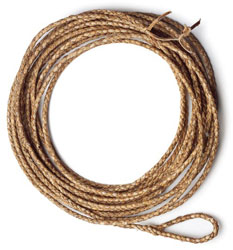 |
|
Photo courtesy Istockphoto / Christine Balderas |
The McLeods work hard, play harder and run roping clinics in between. Their specialty concentrates on beginners and novice levels and, having watched inspirational teachers, clinicians and workshops in the horse industry worldwide, these two are dusted with a special intuitive connection that only the very best tap into when passing along knowledge and savvy.
They’ve been together fifteen years and grin at each other, bemused it seems, when I ask them the length of their relationship. Cattle, and mutual friends brought them together at the Stampede show grounds one hot July afternoon, they explain, laughing at memories and it’s pretty obvious this is how they savour life and teaching, always concentrating on the positives.
 |
|
Photo by Pam Asheton |
Vern, who’s worked for the City of Calgary’s Fire Department for over 18 years, has competed in Canada, the United States and Australia in club and rodeo competitions – usually breakaway and team roping – and roped now for over 38 years. His teaching rapport is particularly notable with beginners and novices. His clinics run over one or two days (the weekend numbers include a authentic old-style ranch barbecue, one-on-one and group tuition, and a CD of photographs highlighting each individual’s efforts) from the McLeod’s Grand Valley spread northwest of Cochrane. You can, he remarks proudly, never have picked up a rope in your life and not feel intimidated here. Participants bring their own horses that often have no rope savvy or cow knowledge (one 4-H club teaching day had one pony about the same size as the steer the kid was roping, and a Trakehner dressage horse even). Classes are small, working initially from the ground getting the feel of different ropes and basic throws with a roping dummy before progressing to ridden work in the 200’ long arena and 80’ round pen.
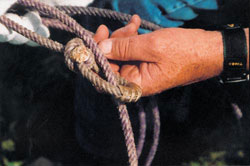 |
|
Photo by Pam Asheton |
“I like to encourage a safe, controlled environment,” he remarks mildly. Watching him run through procedures with a visiting friend, it’s obvious he gets people to aim at being self-analytical so they can go away and still work on their throws.
His ground and ridden work is experiential (this means there’s very little talk and totally go-and-do-it practical application). Authenticated research in teaching fields shows that if you explain and talk your subject, generally speaking your student absorbs ten per cent. Change that to experiential and the learning curve amazingly increases straight up to 90 per cent levels.
 |
|
Photo by Pam Asheton |
Lynn (who barrel races and competes wholeheartedly on the All Girls Rodeo circuit) also works full-time as secretary for the Professional Bull Riders (PBR), works tirelessly behind the scenes. A prime-time gifted organizer, she produces meal after meal right from the first coffee and morning breakfast at arrival time to lavish barbecue spreads, as well as snapping off several hundred candid digital photographs throughout the clinics for teaching purposes.
“People pick up their own style,” Vern finishes, “then you start working on little things. If they’re having a problem with what they’re doing, you change things and try and find what works for them, so they can have success. You’ve never seen such excitement as when they catch the first time! The best part for us is, people who come end up with a real passion.”
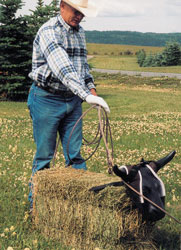 |
|
Photo by Pam Asheton |
Pam Asheton regularly writes freelance for newspapers and magazines on horses, ranches, the backcountry and anything interesting in between; individuals passionate in their lives get her pen itching every time.
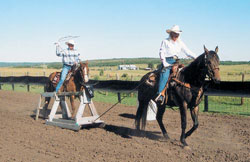 |
|
Photo by Pam Asheton |
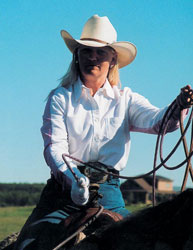 |
|
Photo by Pam Asheton |
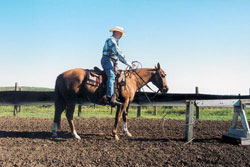 |
|
Photo by Pam Asheton |
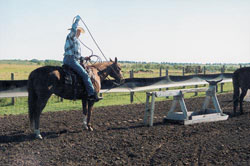 |
|
Photo by Pam Asheton |
 |
|
Photo by Pam Asheton |
